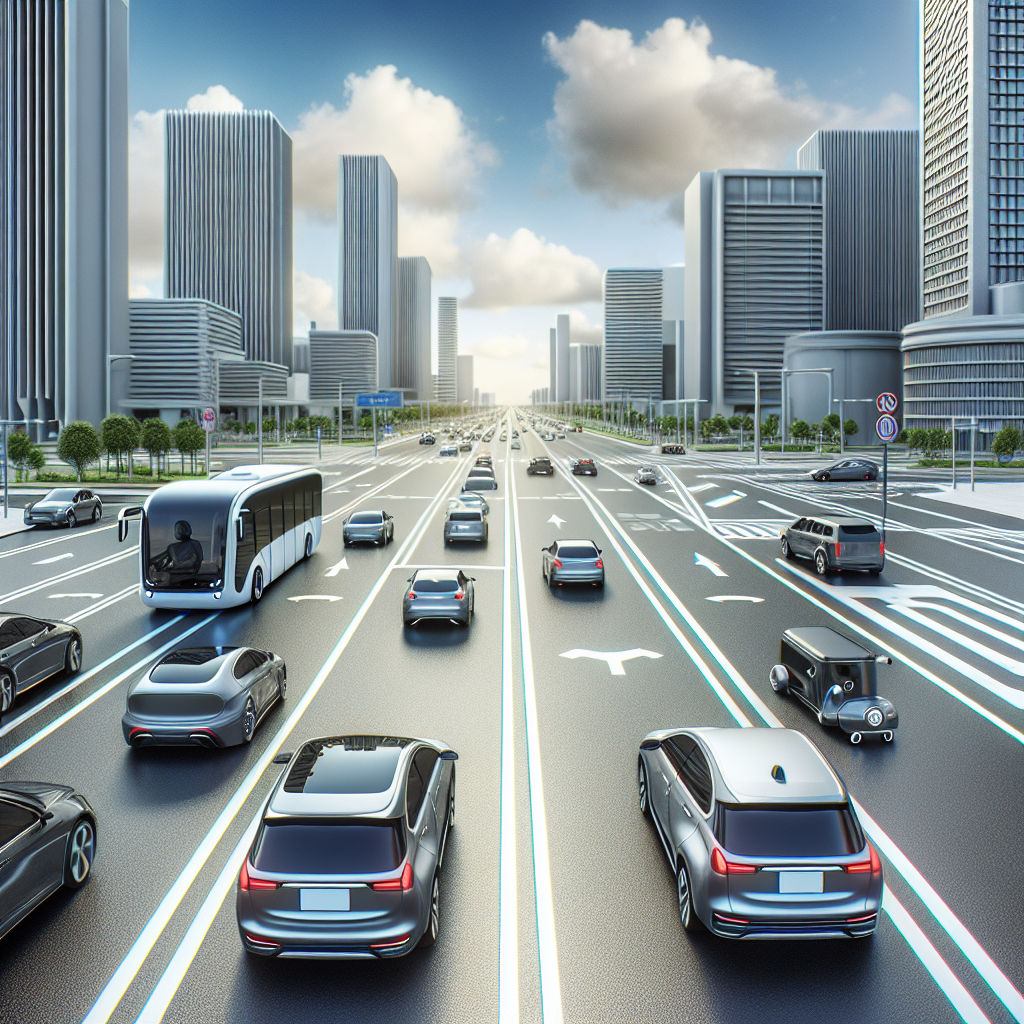The Role of Autonomous Vehicles in Reducing Traffic Congestion
In the ever-evolving landscape of urban transportation, the advent of autonomous vehicles (AVs) heralds a significant shift not only in how we commute but also in how we address and manage one of the most persistent problems of modern urbanity: traffic congestion. As cities around the globe grapple with the challenges posed by increasing vehicle numbers and limited urban space, the potential of autonomous vehicles to alleviate traffic congestion cannot be overstated. This article explores the multifaceted ways in which AVs could contribute to smoother, more efficient urban traffic flows, ultimately providing a glimpse into a future where gridlocks and traffic jams could become a thing of the past.
Enhanced Traffic Flow and Efficiency
One of the most significant contributions of autonomous vehicles to reducing traffic congestion lies in their ability to optimize traffic flow and efficiency. Unlike human drivers, who are prone to errors, distractions, and unpredictable behavior, AVs are programmed to operate in a highly consistent and efficient manner. They can communicate with each other and with traffic management systems in real-time, allowing for synchronized movements that minimize the stop-and-go patterns often seen in heavy traffic. By maintaining optimal speeds and reducing unnecessary braking and acceleration, AVs can significantly increase the capacity of existing roadways and decrease the overall travel time.
Decreased Human Error
Human error is a major contributor to traffic congestion, with incidents such as accidents, abrupt lane changes, and inconsistent driving speeds leading to significant delays. Autonomous vehicles, equipped with advanced sensors and AI algorithms, are designed to make precise maneuvers and maintain consistent speeds, effectively reducing the likelihood of accidents and the congestion they cause. Moreover, AVs can react to changes in traffic conditions more quickly than humans, further minimizing the impact of unexpected events on traffic flow.
Efficient Use of Infrastructure
Autonomous vehicles can also contribute to more efficient use of existing infrastructure. With the capability to operate safely at closer distances to one another, AVs can increase the density of vehicles on the road without compromising safety, effectively increasing road capacity. Additionally, their ability to communicate and operate in coordinated fleets could facilitate the implementation of platooning strategies, where vehicles travel in closely spaced convoys, further optimizing road space and reducing congestion.
Reduced Need for Parking
A significant yet often overlooked aspect of traffic congestion is the search for parking. Drivers circling city blocks in search of parking spaces not only contribute to congestion but also to increased emissions and wasted time. Autonomous vehicles, however, could dramatically change this dynamic. With the ability to drop off passengers and then park themselves in less congested areas—or even better, operate continuously without the need for parking—AVs could significantly reduce the congestion caused by parking-related circling.
Promoting Car Sharing and Public Transit
Finally, autonomous vehicles have the potential to transform attitudes towards car ownership and usage, promoting more efficient modes of transportation such as car-sharing and public transit. By making shared AV services convenient and accessible, individuals may be less inclined to own private vehicles, thereby reducing the total number of vehicles on the road. Moreover, AVs could serve as a seamless extension of public transit networks, providing last-mile connectivity and encouraging more people to opt for public over private transportation.
FAQs
Q: When will autonomous vehicles become mainstream?
A: The timeline for widespread adoption of autonomous vehicles is uncertain and will depend on technological advancements, regulatory approvals, and public acceptance. Some estimates suggest that we could see significant numbers of AVs on the roads within the next decade.
Q: Are autonomous vehicles safe?
A: Autonomous vehicles are designed to reduce human error, which is a leading cause of accidents. However, as with any technology, ensuring their safety requires rigorous testing and regulatory oversight. The long-term safety of AVs will become clearer as more of them are deployed and tested in real-world conditions.
Q: Will autonomous vehicles eliminate the need for public transit?
A: Rather than eliminating the need for public transit, autonomous vehicles are more likely to complement it. AVs can provide flexible, on-demand transportation options that seamlessly integrate with existing public transit systems, enhancing overall mobility and accessibility.
Q: Can autonomous vehicles completely solve traffic congestion?
A: While autonomous vehicles offer promising solutions to reduce traffic congestion, they are not a panacea. A comprehensive approach, including improved public transit, urban planning, and traffic management strategies, will be necessary to address the complex issue of urban congestion fully.
Q: How will autonomous vehicles impact employment in the transportation sector?
A: The rise of autonomous vehicles is likely to significantly impact employment in the transportation sector, particularly for jobs related to driving. However, it may also create new opportunities in areas such as fleet management, data analysis, and vehicle maintenance and development.
The emergence of autonomous vehicles represents a transformative leap forward in our quest to mitigate urban traffic congestion. By enhancing traffic flow, reducing human error, making more efficient use of infrastructure, and promoting shared mobility, AVs hold the promise of creating more livable, sustainable cities. While challenges remain, particularly related to technology, regulation, and societal acceptance, the potential benefits of autonomous vehicles in alleviating traffic congestion are too significant to ignore. As we stand on the cusp of this transportation revolution, it is imperative that we navigate the transition thoughtfully, ensuring that the deployment of AVs contributes to the overall health, safety, and well-being of urban populations around the world.

